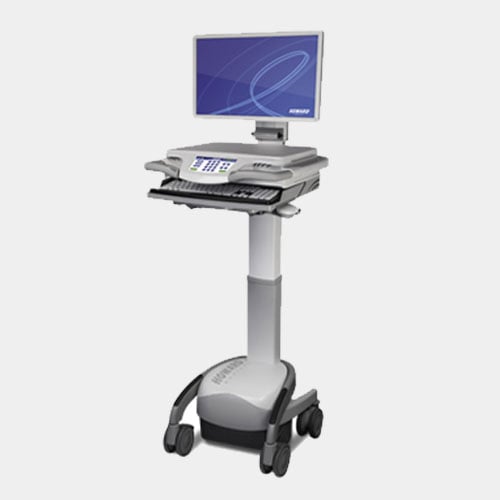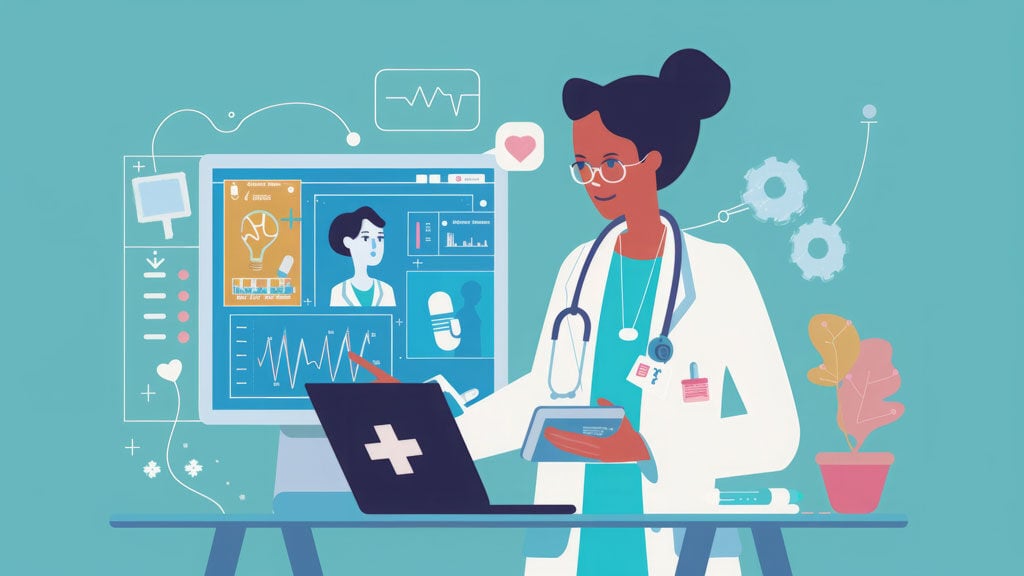 Are you faced with increased pressure to cut costs, preserve capital, and increase efficiency without any additional resources? Here is how one IMS supported hospital group maximized availability, measurably extending the life of a capital asset (mobile computer workstations), by investing in a quality cart and a preventative maintenance program. Their investment is paying off; they continue to use carts purchased in 2007 that are still in full rotation, showing very little wear and tear. They truly understand the long term value of buying, not just on price but the total cost of ownership.
Are you faced with increased pressure to cut costs, preserve capital, and increase efficiency without any additional resources? Here is how one IMS supported hospital group maximized availability, measurably extending the life of a capital asset (mobile computer workstations), by investing in a quality cart and a preventative maintenance program. Their investment is paying off; they continue to use carts purchased in 2007 that are still in full rotation, showing very little wear and tear. They truly understand the long term value of buying, not just on price but the total cost of ownership.
Return On Investment:
- Support costs, including Preventative Maintenance (PM), parts and labor average;
- 1.34% of the purchase price on an annualized basis
- No hospital IT resources are required for maintenance (except cart swap out).
- No need to hire a full time employee to service carts.
- Fewer calls to the IT Help Desk.
- Typical replacement cycle for competitive workstations is 3 to 5 years.
- Longevity for the oldest workstation is currently 9 years resulting in significant COST AVOIDANCE, i.e. replacement of workstations.
- What kind of cost saving would materialize if you could extend your fleet of mobile workstations an additional year? 3 years? 5 years?
Facts:
- Hospital group with five locations*.
- Purchased 830 Howard Hi-Care Rounding Workstations On Wheels.
- Initial cart purchase began in 2007.
- Approximate purchase value of all carts from 2007 to 2015 is $3,500,000.
- The PM covers Howard workstations.
- Since 2007, the client only purchases Howard Hi-Care Workstation on Wheels and no other brands of workstations because they have experienced first-hand the long-term value of their investment and have realized significant savings year after year.
Path to establishing an efficient cart maintenance workflow:
- To fully take advantage of the PM provided by Innovative Medical Systems (IMS), hospital personnel and IMS put together a step-by-step process.
- Every other year IMS does a full PM on all carts.
- IT made a commitment to clinicians that a workstation will be down no more than 30 minutes.
- In order to accomplish this, IT always keeps a number of “spare” carts available. When a workstation needs repair, it is swapped out immediately with a spare.
- When the number of spares drops below what’s needed in a typical month, an IMS technician goes on-site to troubleshoot and repair all of the “down” workstations.
- Typically repairing, on average, 7 workstations every 7 weeks.
What should you expect from Preventative Maintenance?
- Carts are cleaned and dust is removed from electronic components such as the inverter.
- This will keep carts “looking and running well”. In the case of this hospital, even carts purchased almost a decade ago in 2007.
- All screws, nuts, bolts and cables are checked for tightness and secured from the use of daily wear and tear.
- Cart availability has increased. Due to the regular maintenance on the carts, typically, only 7 carts (out of 830) are requiring “repair” every 7 weeks.
- The PM has allowed IT staff increased availability to focus on other areas/issues.
- No need to hire a full time employee for servicing carts.
- No need to train staff members on advanced repair.
- Regular maintenance has shown to preserve the inverter, with 830 carts that alone adds up to significant savings.
- Repair components are only billed when needed. This eliminates the need to stock inventory.
The staff at IMS prides itself on doing business differently. We look for ways to create efficiency and show ROI. Often, we are an extension of your staff, like in the example above.
Contact us today to talk about cost of ownership and together let’s explore how we can extend the life of your mobile computing workstations. Making a smart investments and keeping things on budget is critical for every organization.


